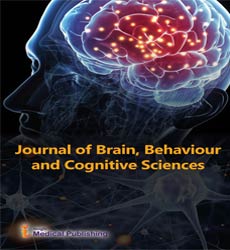Mind Capability through Unique Neuronal Models of Hereditary Variables
Bruce S McEwen*
Department of Neuroendocrinology, The Rockefeller University, New York, USA
- *Corresponding Author:
- Bruce S McEwen
Department of Neuroendocrinology, The Rockefeller University, New York,
USA,
E-mail: mcewen.bruce@gmail.com
Received date: May 20, 204, Manuscript No. JBBCS-24-19474; Editor assigned date: May 23, 2024, PreQC No. JBBCS-24-19474 (PQ); Reviewed date: June 06, 2024, QC No. JBBCS-24-19474; Revised date: June 13, 2024, Manuscript No. JBBCS-24-19474 (R); Published date: June 20, 2024, DOI: 10.36648/jbbcs.7.1.42
Citation: McEwen BS (2024) Mind Capability through Unique Neuronal Models of Hereditary Variables. J Brain Behav Cogn Sci Vol.7 No.1: 42.
Description
Computational neurogenesis demonstrating is a field committed to understanding how hereditary variables impact mind capability through unique neuronal models. This area of exploration coordinates experiences from hereditary qualities, genomics and neuroscience to investigate the connections among qualities and neuronal exercises. Over ongoing years, the field has seen critical headways with the expanded use of hereditary and genomic strategies, especially in grasping brain adaptability the mind's capacity to adjust and rearrange itself. Analysts frequently use mice for these examinations because of the availability of hereditary devices, which consider exact control of qualities.
Neurochemical profiles
Ongoing mechanical advances in single-cell sequencing have additionally upgraded how we might interpret cerebrum intricacy. Single-cell sequencing permits specialists to investigate the variety of cell types inside the cerebrum, which is pivotal for understanding both ordinary mind capability and the effect of hereditary variations on individual cells. In 2024, a significant report used a complete dataset containing almost 3 million cores from the human prefrontal cortex, gathered from 388 people. This exploration effectively clarified 28 unmistakable cell types and broke down quality articulation and chromatin variety across these cell types. These discoveries empowered the development of cell-type administrative organizations and furnished experiences into cell changes related with maturing and neuropsychiatric issues. Furthermore, the review utilized an AI model to foresee single-cell articulation precisely, zeroing in on roughly 250 qualities related with sickness hazard and medication targets. The area of neuroscience is well established in authentic discussions about the idea of the psyche and the job of the cerebrum. Early savants were partitioned on whether the cerebrum or the heart was the seat of the spirit. Aristotle, for instance, accepted that the heart was the focal point of feeling and mind, while he saw the cerebrum's job as simply cooling the blood. Conversely, Democritus, who is credited with fostering the the nuclear hypothesis of issue, proposed a three sided model of the spirit: Mind in the head, feeling in the heart and desire in the liver. Such authentic points of view feature the developing comprehension of cerebrum capability over centuries.
Physiological cycles
Current neuroscience recognizes that even individual neurons display momentous intricacy and perform refined calculations. Precise mind displaying requires catching this intricacy, which presents critical difficulties because of the computational assets required. Endeavors to construct reasonable models of the cerebrum, for example, those attempted by the human mind undertaking, plan to make point by point reenactments of cerebrum capability. Notwithstanding, these aggressive activities have ignited banter inside mainstream researchers. While some contend that such models are fundamental for propelling comprehension we might interpret the cerebrum, others question their possibility and reasonable worth given current computational cutoff points. The mind's construction incorporates different areas with specific capabilities. For instance, the pons, situated in the brainstem over the medulla, contains cores answerable for controlling fundamental yet vital capabilities like rest, breath, gulping, bladder control, harmony, eye developments, looks and stance. Notwithstanding its somewhat little size, the pons assumes a huge part in directing these cycles, featuring the brainstem's in keeping up with fundamental physical processes. The nerve center is one more vital cerebrum area, arranged at the foundation of the forebrain. Albeit little, the nerve center is profoundly complicated and fundamental to various physiological cycles. It comprises of a few cores, each with extraordinary associations and neurochemical profiles. The nerve center controls a scope of compulsory and to some extent willful capabilities, including rest wake cycles, eating and drinking ways of behaving and the arrival of specific chemicals. Its many-sided organization of associations and its part in keeping up with homeostasis highlight its significance in cerebrum capability and in general wellbeing.
Open Access Journals
- Aquaculture & Veterinary Science
- Chemistry & Chemical Sciences
- Clinical Sciences
- Engineering
- General Science
- Genetics & Molecular Biology
- Health Care & Nursing
- Immunology & Microbiology
- Materials Science
- Mathematics & Physics
- Medical Sciences
- Neurology & Psychiatry
- Oncology & Cancer Science
- Pharmaceutical Sciences
